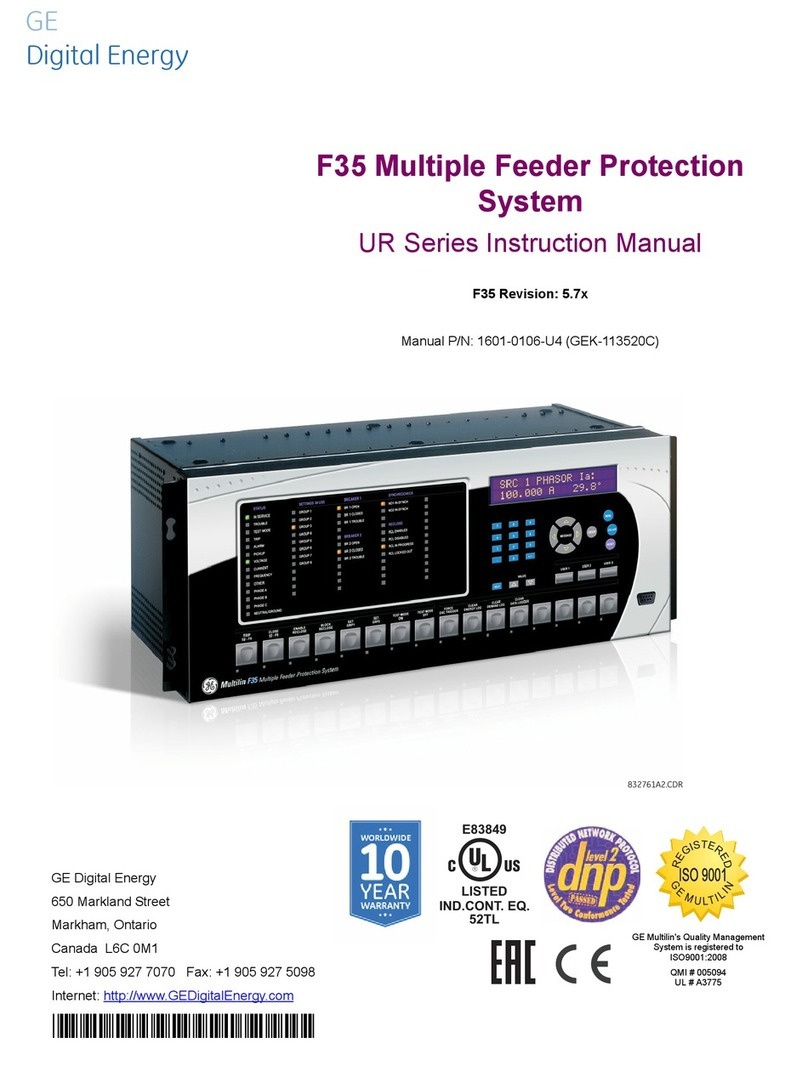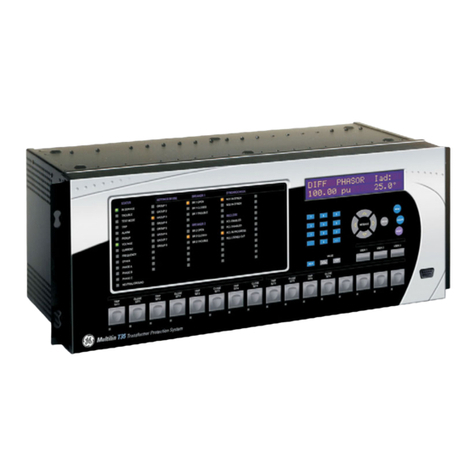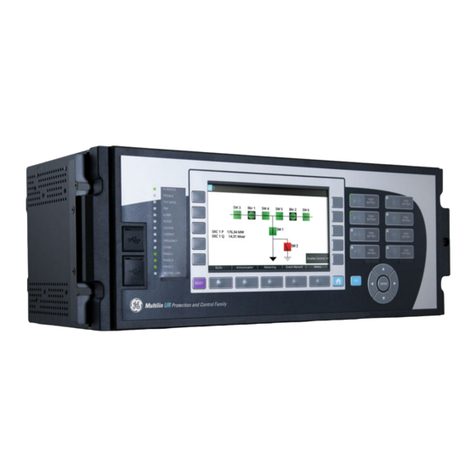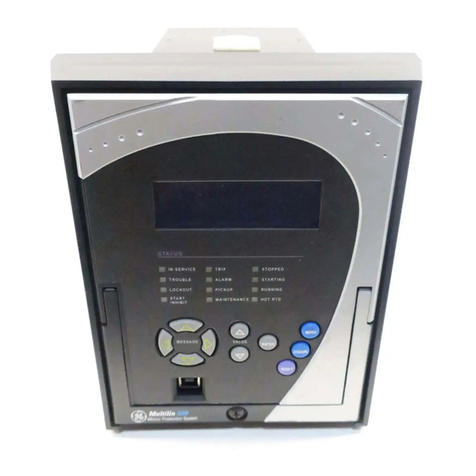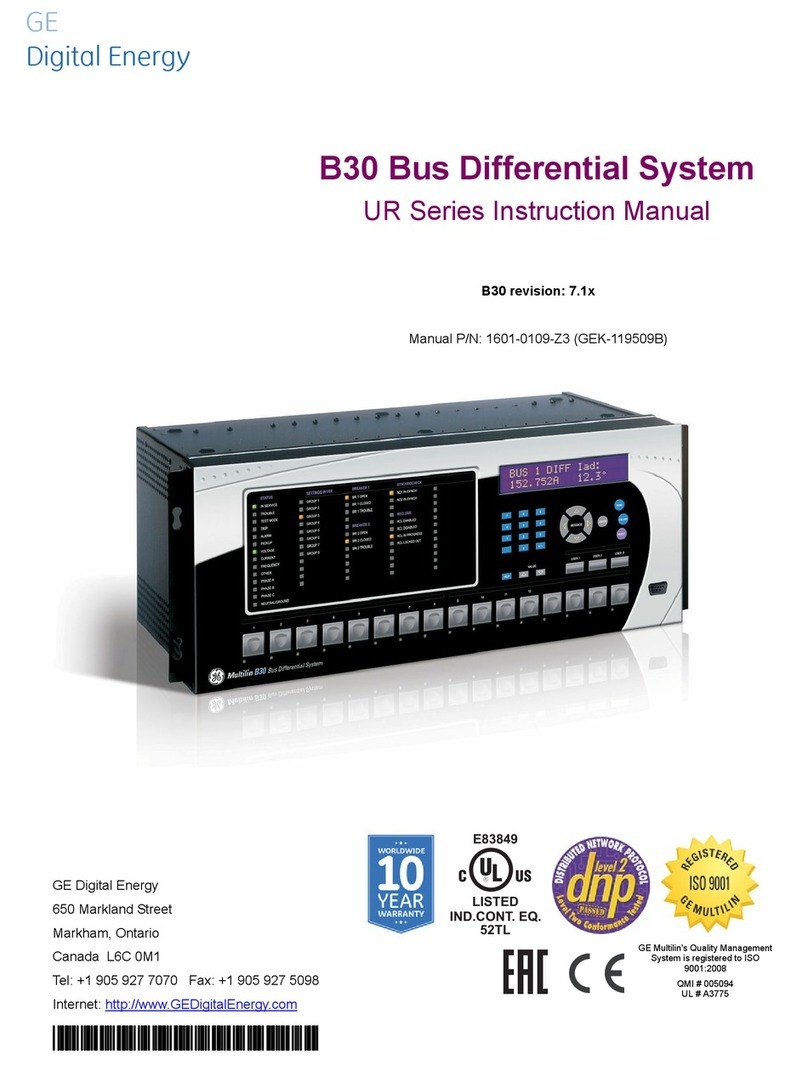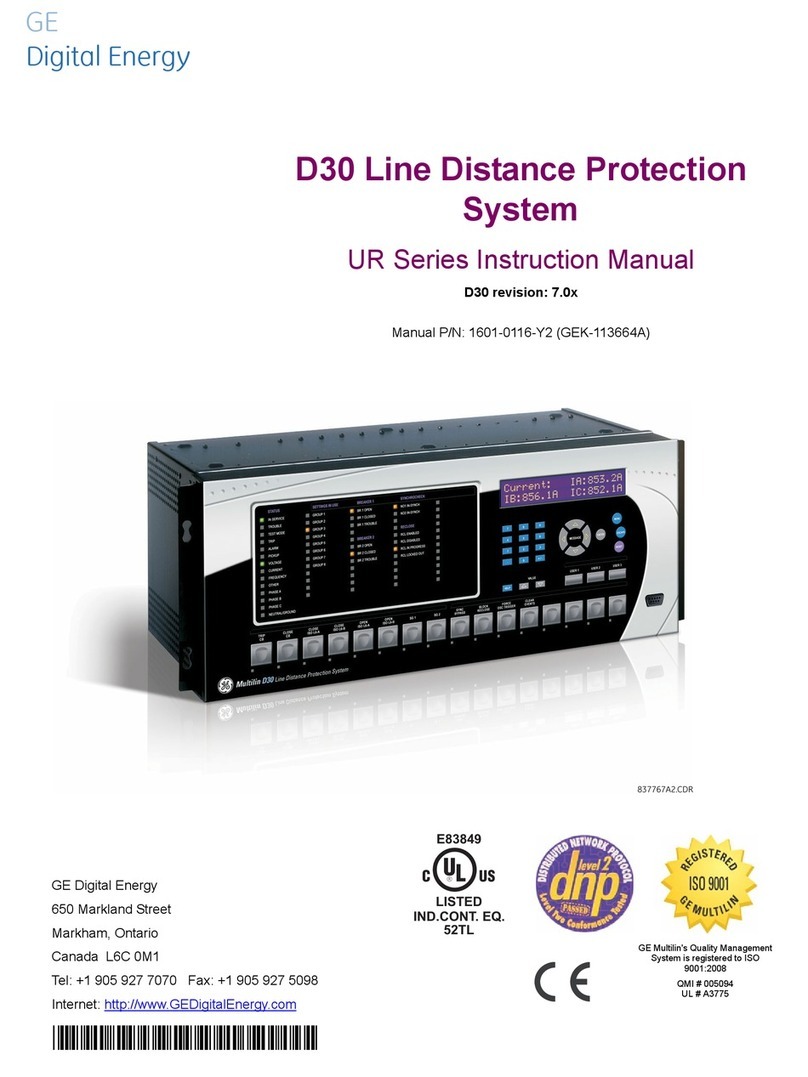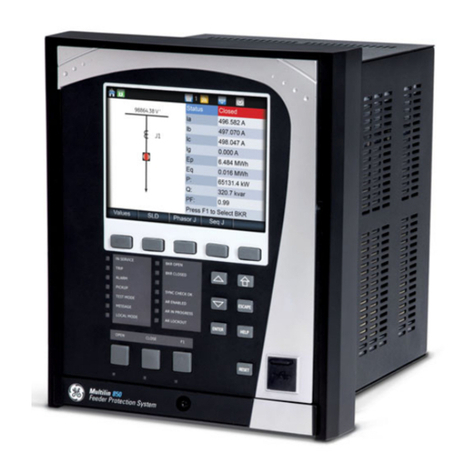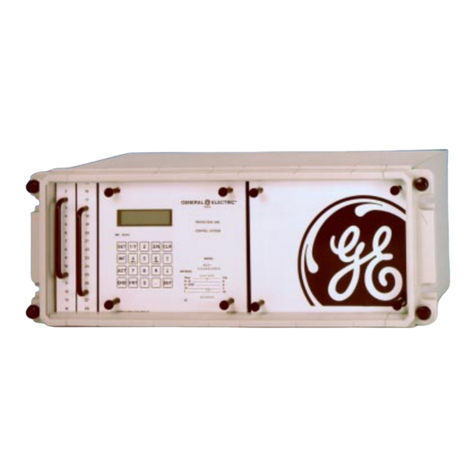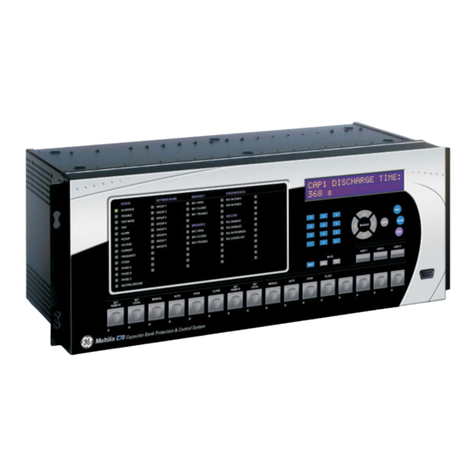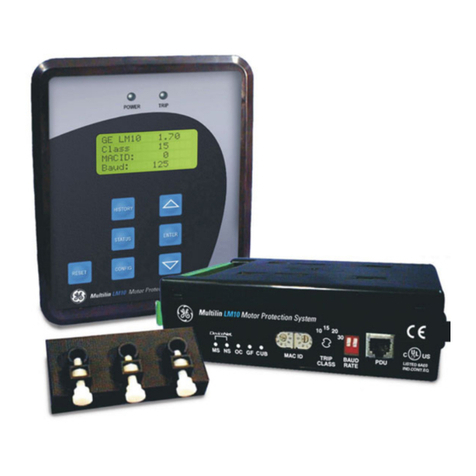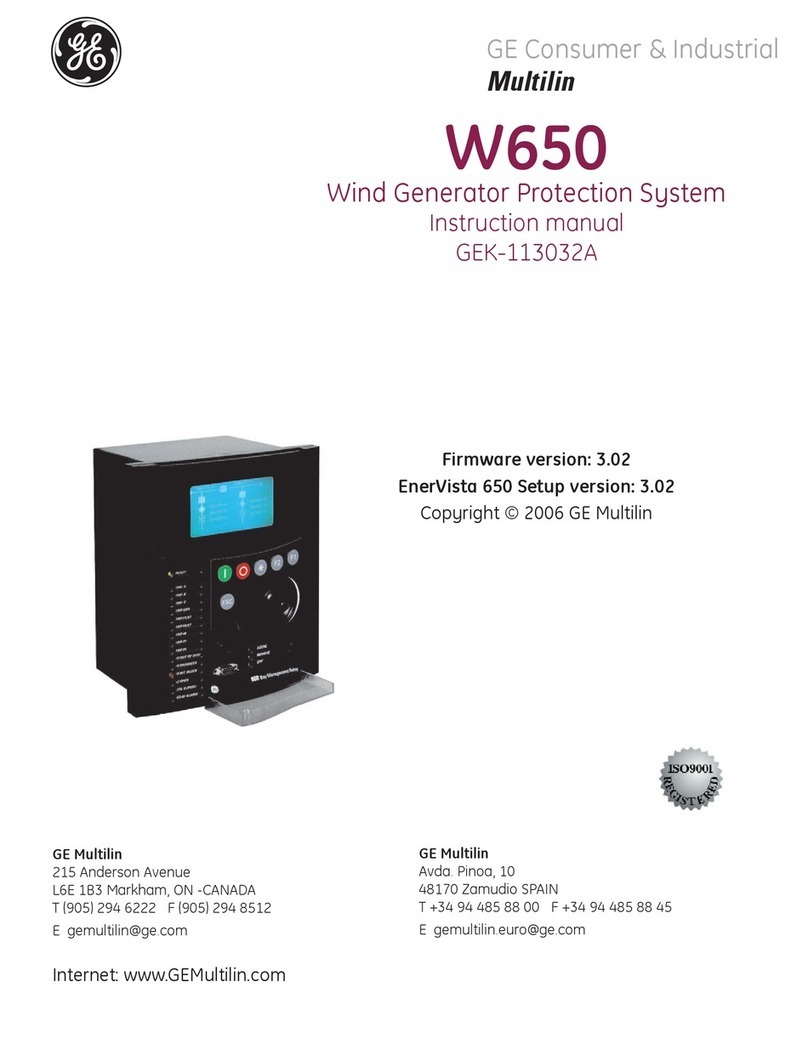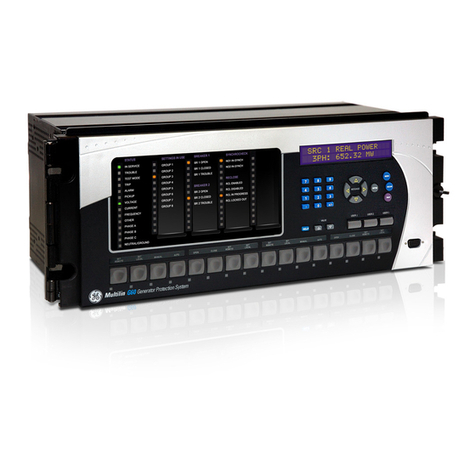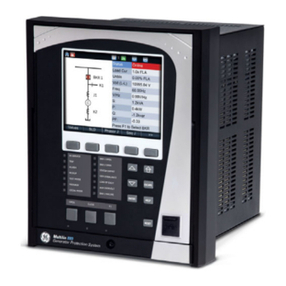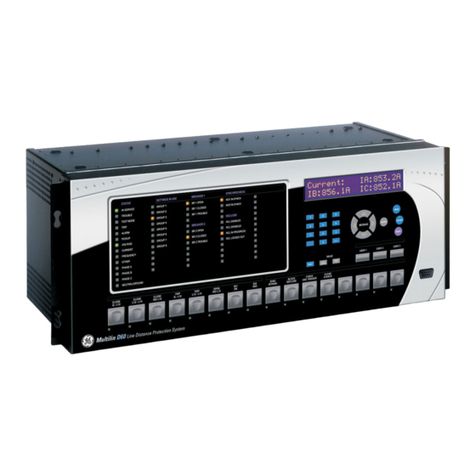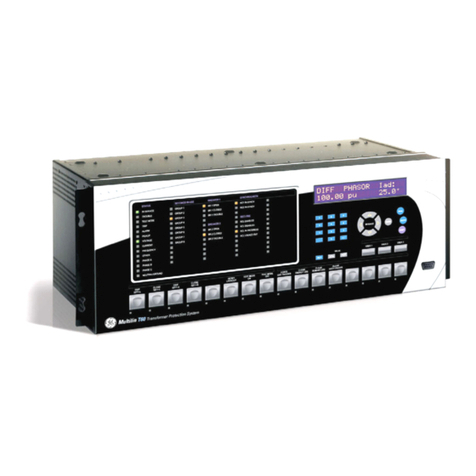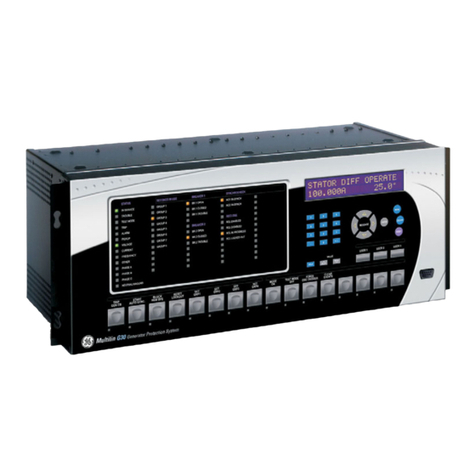
1. DESCRIPTION
GEK-98514B BUS1000 Busbar Protection 1-1
1.
1.1.
1. DESCRIPTION
DESCRIPTIONDESCRIPTION
DESCRIPTION
The BUS1000 is a high-speed static protection system aimed at detecting phase to phase and to ground
faults in buses at high voltage substations.
The main unit is an overcurrent three phase differential relay with percentage restraint and stabilization
resistors.
The relay is provided with a very sensible overcurrent differential unit which provides an alarm and blocks
the output of any protection trip in case of an accidental disconnection of any of the measuring units’ inputs
during the normal operation of the substation.
As an option, the protection system may include a detection device for breaker failures, associated to the
differential protection and overcurrent units for individual supervision of tripping from each breaker.
The modular feature of the system allows to carry out various configurations adapted to the specific
characteristics of the buses to be protected (multiple or single-bus, breaker and one half, special
dispositions, etc.)
Depending on the complexity of the application, the protection system is housed in one or more 19
inches standard racks or, as an option, in complete cabinets.
The outstanding features of the BUS1000 system are:
•Does not need dedicated secondary
•Signalling and tripping contacts independent of location.
•Redundant measuring circuits for self-checking.
•Measuring "units" for line currents and operation and restraint magnitudes in order to ease the set up and
maintenance.
•An optional testing system to check the operation of the alarm and measuring units in normal operation
conditions.
•Optional overcurrent units for the supervision of the breaker tripping in every position.
•An optional breaker failure detection device. (Several steps logic available)
•Optional lockout relays (86)
The information given hereafter does not intend to cover all the different details or variations of
the described equipment neither does it intend to foresee any event that may arise during its set up,
operation or maintenance.
Should any further information be requested, or in the event of a specific problem that may need
any information other than that provided, refer to GE POWER MANAGEMENT, S.A.







